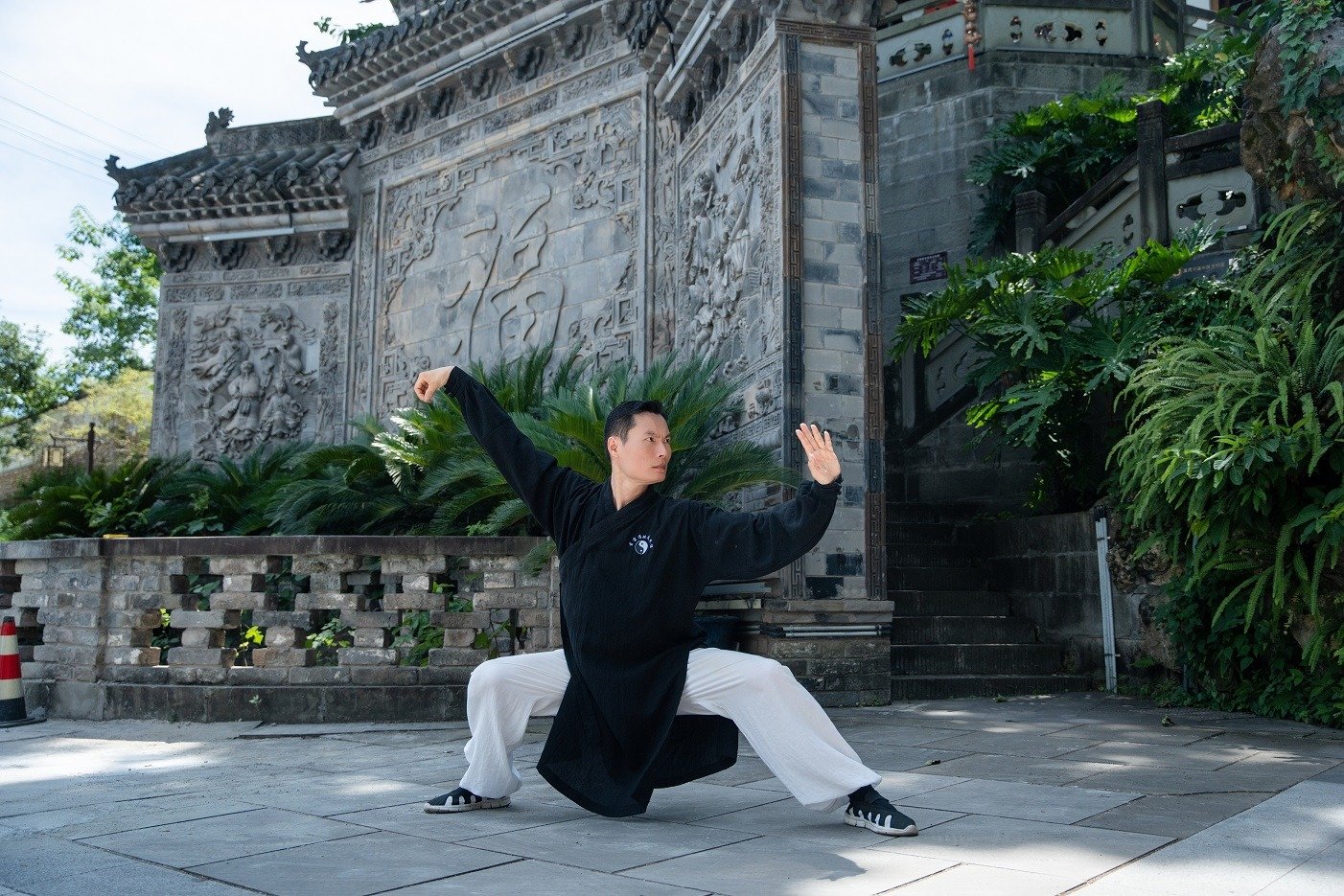The 42-form Tai Chi is an international standard competition routine created in 1989 by the Chinese National Sports Commission’s Wushu Research Institute, with input from leading Tai Chi masters across China.
- Contains 42 distinct movements (not counting repeats)
- Integrates techniques from Yang, Chen, Wu, and Sun styles (Yang-style as the primary framework)
- Rich in content, carefully structured, and highly standardized
- Performance time: 5–6 minutes, aligning with domestic and international competition rules
Since its introduction, the 42-form has been adopted as an official Tai Chi competition routine worldwide.
🌀 Movement Style
The 42-form uses Yang-style’s relaxed, continuous movement as its foundation while incorporating:
- Chen-style: clear explosive power, lower stances
- Sun-style: open–close transitions, agile footwork
- Wu-style: compact, stable movements
Overall, the style is diverse but cohesive, with precise, standardized technique, combining softness and strength and speed variations without excessive difficulty.
It emphasizes:
It emphasizes:
- Upright body alignment
- Stable weight shifts
- Large, elegant frames
- Balance work
- Leg kicks (Separate Foot, Heel Kick)
These features enhance its competitive and aesthetic qualities.
🎯 Training Purpose
The 42-form is designed primarily for Tai Chi competition and demonstration to standardize and unify different Tai Chi styles for fair judging.
By practicing the 42-form, athletes can:
By practicing the 42-form, athletes can:
- Improve all-around Tai Chi skills
- Train across a well-balanced mix of simple and complex movements
- Retain authentic Tai Chi flavor while gaining fitness benefits
- Use it for body strengthening (safe for those in normal health)
For individuals with weaker constitutions, single movements can be practiced separately under guidance for health and rehabilitation.
Its clear, symmetrical choreography also makes it popular for large-scale group performances and synchronized artistic presentations with music.
Its clear, symmetrical choreography also makes it popular for large-scale group performances and synchronized artistic presentations with music.
🆚 Key Differences
The 42-form’s key strengths are its:
- Comprehensiveness
- Competitive suitability
Unlike traditional single-style forms, it deliberately blends the best techniques from multiple styles into a standardized routine.
Compared to the 24-form:
Compared to the 24-form:
- Introduces higher-level movements
- Offers greater technical depth
- More suitable for experienced practitioners and competition
Compared to the 28-form:
- Includes more movements
- Has a longer sequence and higher difficulty
- Better suited for advanced competitive use
Unlike single-school competition forms (e.g., Chen-style 56-form or Yang-style 40-form), the 42-form is a cross-style “integrated Tai Chi” routine, making it:
- Uniquely versatile
- One of the most widely used competition routines in domestic and international events.

